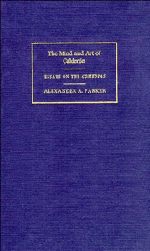Book contents
24 - Mythology and humanism
Published online by Cambridge University Press: 05 February 2012
Summary
All men have a guide within their own traditions to the problem of human destiny. One such was mythology in the ancient pagan world. Calderón considered classical mythology to be a variant or deviant form of the original revelation given to Mankind. Ten of his autos sacramentales use classical myths as allegories of Christian dogmas, including the Incarnation and the sacrificial death of Christ. In the earliest Christian centuries Orpheus had appeared as a symbol of Christ, because he broke down the gates of Hades in order to restore his beloved, Eurydice, to the world. Very soon, however, the early Church fathers scornfully attacked the Greek and Roman gods, ridiculing especially their licentiousness and marital infidelities. The stern judgement of Lactantius was that ‘if one were to call out to Jupiter, Neptune, Vulcan, Mercury, Apollo, and Saturn, the father of them all, they would all reply from the depths of Hell.’ Calderón, however, justifies his use of mythology in the autos by pointing to the numerous parallels between the fables and the Bible, because Renaissance mythographers had more than an inkling of comparative anthropology.
Our modern culture finds nothing extravagant in such a parallel. In fact, the modern anthropologist would accept the parallel but would invert its interpretation. The Christian doctrines of the Virgin Birth, God made Man, His sacrificial death as the means of freeing Mankind from enslavement to sin and guilt, might themselves be considered myths, alternative forms of the Graeco-Roman fables.
- Type
- Chapter
- Information
- The Mind and Art of CalderónEssays on the Comedias, pp. 340 - 347Publisher: Cambridge University PressPrint publication year: 1989
- 1
- Cited by

